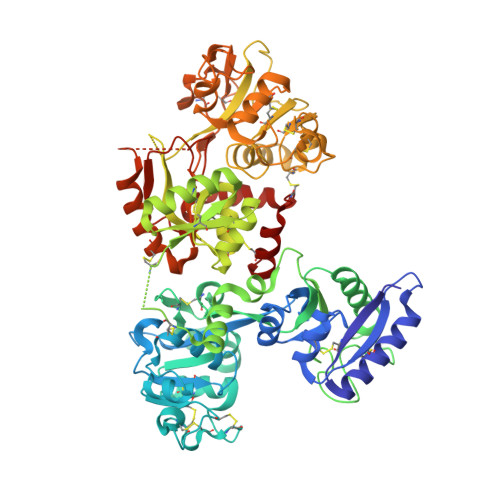The role of citrate, lactate and transferrin in determining titanium release from surgical devices into human serum.
Curtin, J.P., Wang, M., Cheng, T., Jin, L., Sun, H.(2018) J Biol Inorg Chem 23: 471-480
- PubMed: 29623422
- DOI: https://doi.org/10.1007/s00775-018-1557-5
- Primary Citation of Related Structures:
5H52 - PubMed Abstract:
The presence of ionic titanium in the serum of patients with titanium implants is currently unexplained. This is presumed due to corrosion, and yet the serum titanium concentration measured in patients is far greater than that predicted by its solubility. The binding of titanium ion as Ti(IV) to human transferrin (hTF) in serum indicates that Ti(IV) ions interact with human physiology. This is an intriguing finding since there is currently no known role for titanium ions in human physiology. Thus, understanding the factors that determine in vivo titanium ion release is relevant to further understanding this metal's interactions with human biochemistry. The present study sought to determine the extent of titanium ion release of into human serum in vitro, and the role of citrate, lactate and hTF in this process. It was found that, when surgical devices of commercially pure titanium were placed into human serum, citrate and lactate concentrations were the prime determinants of titanium release. Crystallography revealed Ti(IV) bound to hTF in the presence of citrate alone, signalling that citrate can act as an independent ligand for Ti(IV) binding to hTF. Based on these findings, a two-stage process of titanium ion release into human serum that is dependent upon both citrate and hTF is proposed to explain the ongoing presence of titanium ion in human subjects with implanted titanium devices.
Organizational Affiliation:
Faculty of Dentistry, The University of Hong Kong, Hong Kong, China. jpcurtin@hku.hk.

















